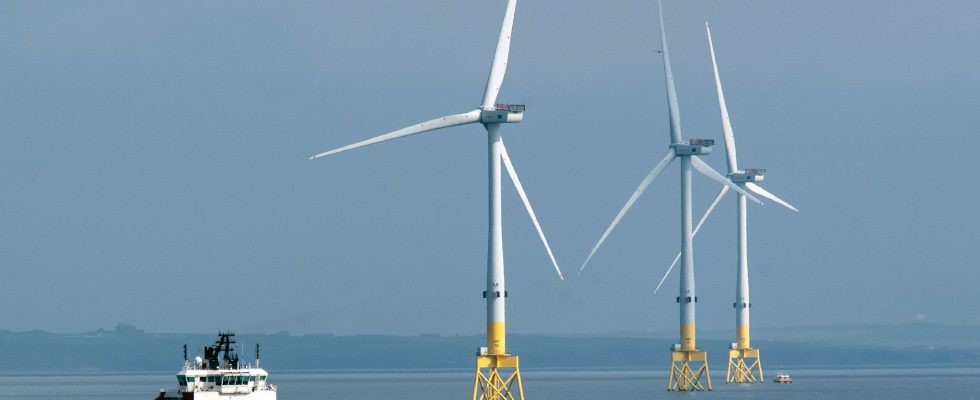Will the neighboring states of the North Sea manage to turn the region into a huge powerhouse? On April 24, nine countries bordering this maritime area committed to massively increase their electricity production capacity from offshore wind turbines. The challenge is colossal. It is a question of multiplying these capacities by ten by 2050. A first stage should make it possible to reach 120 gigawatts in 2030, then at least 300 gigawatts in the middle of the century.
This commitment is a huge industrial gamble, because for the moment the sector is swimming in the midst of a paradox: while governments are displaying high objectives in terms of energy transition, the main manufacturers in the EU are struggling on an accounting level. For the past few months, the activity reports of the majors in the sector have resembled a long litany of losses. “The European wind industry is in a critical situation. Despite heavy investments in renewable energies, it faces serious financial difficulties”, explained in January the president of Siemens Gamesa, Christian Bruch, whose company concluded the year 2022 out of a net deficit of 940 million euros. Same observation at the Danish Vestas, yet world number 1 in the sector, which lost more than 1.5 billion euros last year, a first since 2013.
Bottlenecks
Hit hard by the rising costs of transport, materials, but also the rare metals needed to build turbines, the players in the wind industry are sticking their tongues out. “The context is particular, tensions over raw materials affect the entire industry, but it must be recognized that wind power is at the forefront of this explosion of costs”, underlines Paul Franc, engineer at the wind and marine energy pole of the ‘Ademe. The manufacturers also face competition from China, “where funding is exploding, with a very ambitious program and very low prices. European turbine manufacturers and equipment manufacturers cannot match”. To make matters worse, the contracts signed before the double Covid crisis and the war in Ukraine, which must now be honored when production costs are much higher, do not bode well for the future.
In a statement published on April 24, a hundred companies in the sector judged severely the propensity of the public authorities to want to put the cart before the horse. Denouncing a European plan dedicated to the industry “too focused on technological breakthroughs, rather than on the real scaling up of existing supply chains”, they sounded the alarm: “Bottlenecks in the manufacture of foundations, cables, substations and in the availability of installations, services and other offshore wind vessels are already looming today.”
Builders are urgently calling for better planning of major projects. “In 2022, not a single offshore wind farm has made a final investment decision,” recalled the consortium. “It’s difficult to ask suppliers, who lost hundreds of millions of euros last year, to increase the pace without providing them with the necessary visibility on the expected volumes”, notes Endri Lico, head of wind research and technologies at the consulting firm Wood Mackenzie.
20,000 jobs expected in France
“Despite the skyrocketing demand for wind energy, the cost situation that developers will face in the years to come is not yet clear”, agrees WindEurope, the European association which brings together manufacturers in the sector. . Especially since the acceleration envisaged by the neighboring countries of the North Sea implies a rise in power at all the links in the chain. “It’s true for manufacturers, but you also have to think about electricity networks and port infrastructure”, underlines Alexandre Roesch, the director general of the Renewable Energies Syndicate.
In this difficult context, France hopes to hold its own. Of the twelve European sites producing components for wind turbines, four are located in France, including those of LM Wind Power, in Cherbourg, which excels in giant blades , or Defontaine, in Vendée, specializing in slewing rings. A national expertise that the State has undertaken to support through a pact for offshore wind power signed last year, which provides for 40 billion euros of investment over the next fifteen years and 20,000 new jobs. By crossing our fingers so that the sector, in Europe, resists this bad wind and does not end up on the carpet.
